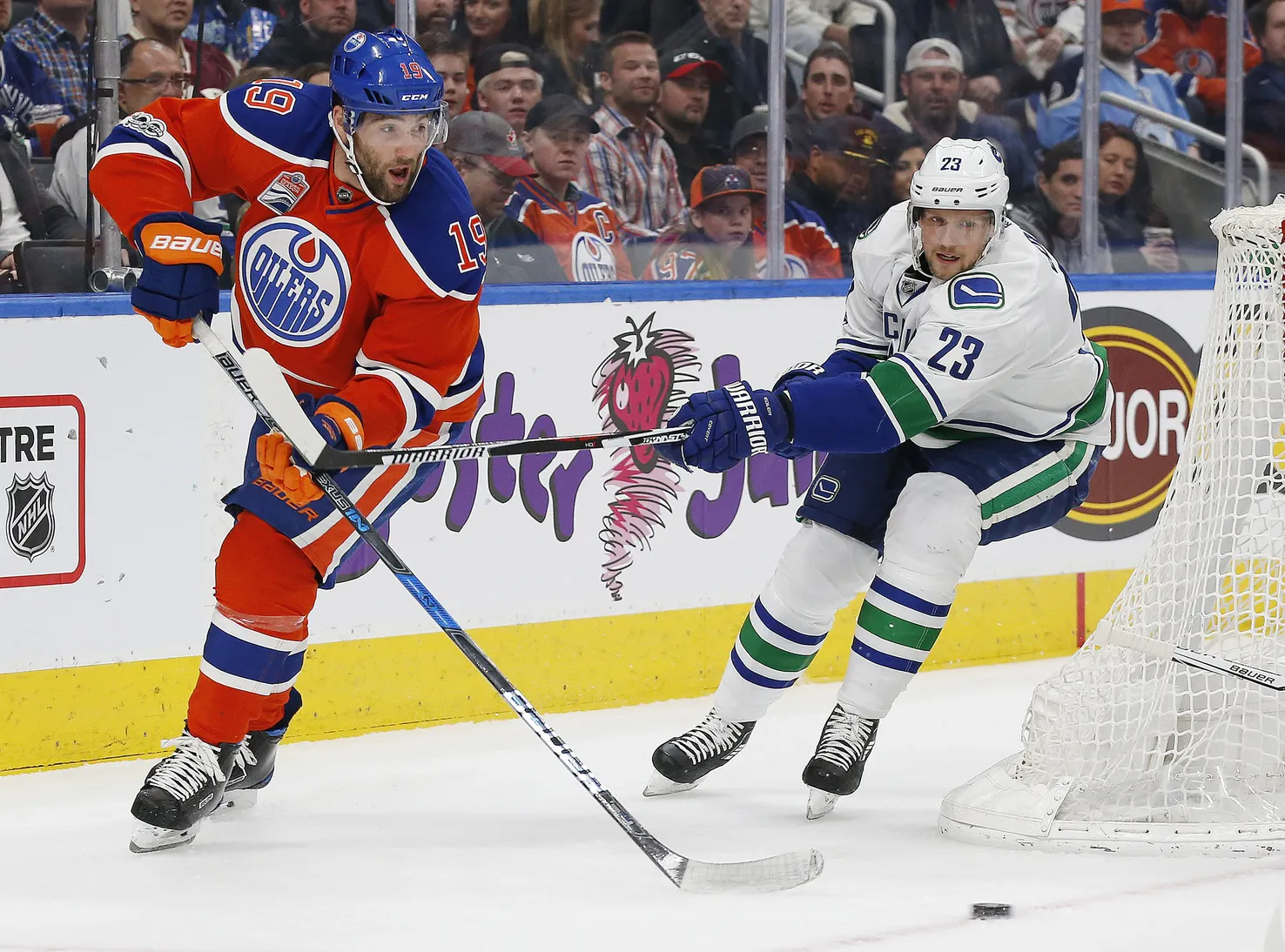2016-17 Edmonton Oilers: No. 19 LW Patrick Maroon
Patrick Maroon spent parts of five seasons with Anaheim, scoring 26 goals over 200-odd games for the Ducks. This year, he tallied 27 while providing a consistent physical presence on Connor McDavid’s left wing. It was an outstanding performance, and for the Edmonton Oilers a brilliant return on both a modest trade outlay and cap hit.
Maroon arrived in Edmonton at the 2016 trade deadline in exchange for not much really:
The #Oilers have acquired Patrick Maroon from the @AnaheimDucks in exchange for Martin Gernat plus a 2016 fourth-round draft pick.
— Edmonton Oilers (@EdmontonOilers) February 29, 2016
Martin Gernat was a failed prospect at the time of the deal, and likely included just to prevent the Oilers from losing a spot on their 50-man reserve list. A fourth-round pick is basically a lottery ticket. The kicker on the deal was that Anaheim agreed to eat 25 percent of Maroon’s remaining salary in the process.
As a result, Maroon only took up $1.5 million of Edmonton’s cap space in 2016-17, and will only take up $1.5 million next season. He’s an unrestricted free agent afterward, but he’s already earned all of that space; if he’d been paid twice as much this past year the Oilers would still have been thrilled with his production.
It’s worth breaking that production down by type and situation.
Maroon had just 15 assists this season. He has averaged 19 per year over the last three seasons while playing in fewer games, so if anything that’s probably a low-end total (particularly given that he’s playing a lot with McDavid and Leon Draisaitl). The vast majority of those assists came at even-strength, as they have in years past.
The big jump was in goals, and while some of it was driven by more shots most of it was because of a spike in shooting percentage. Those of you who have been reading me for some time know that this is where I usually say that this is a sure indication that it isn’t sustainable. This time, though, I’m not sure that’s true.
Back in January I went looking for comparable players. There’s a long explanation there and a range of possible outcomes, but in my estimation the most likely was this:
A more likely result would see a regression to Maroon’s current career average or something slightly north of it. His average now is 12 percent, taking into account his time with both the Oilers and Ducks, and if that’s all he is he’d still be a 20-goal man on McDavid’s line. If he were to come in a little bit better, he’d be in the 25-goal range and that’s a perfectly respectable number.
If that’s true, there’s another advantage: those goal totals aren’t inflated by power play time. Maroon scored 24 of his 27 goals at even-strength this year, ranking him 17th in the NHL in that department. He had more even-strength goals than Nikita Kucherov and Evgeni Malkin, among others. It’s hard to overstate how valuable that is.
It’s also worth highlighting the performance of Edmonton’s top line by the shot metrics. Maroon and McDavid both hovered around a 54 percent Fenwick rating, an exceptional number, and Maroon’s on-ice totals were great even when he wasn’t out with McDavid. He’s clearly a player who can be part of a dominant puck possession unit.
Maroon’s excellent year continued into the playoffs. He quietly put up seven even-strength points, the second-best number on the team. He had some lapses in discipline, and while to some degree that’s just a cost of doing business for a physical player it is an area he can improve on.
That’s a quibble, though. Maroon would have been perfectly satisfactory at twice his current price. At $1.5 million, he was one of the best bargains in the NHL.
Bottom line: Maroon was a goal scorer, a physical presence and was part of a dominant puck possession line for the Oilers, all for the low, low price of $1.5 million. He’s the perfect salary cap player.
Previous year-end reviews:
- Centre: David Desharnais
- Wing: Jordan Eberle, Tyler Pitlick
- Left Defence: Andrej Sekera, Griffin Reinhart
- Right Defence: Adam Larsson, Kris Russell, Mark Fayne
- Goal: Laurent Brossoit

